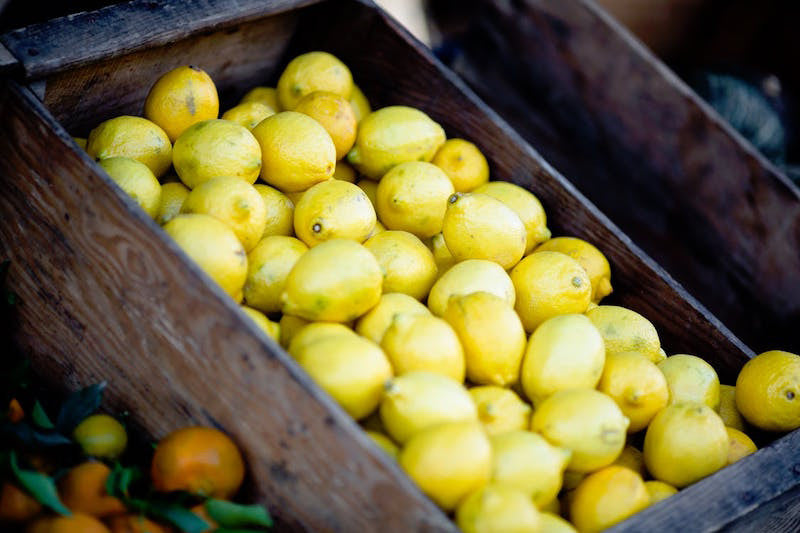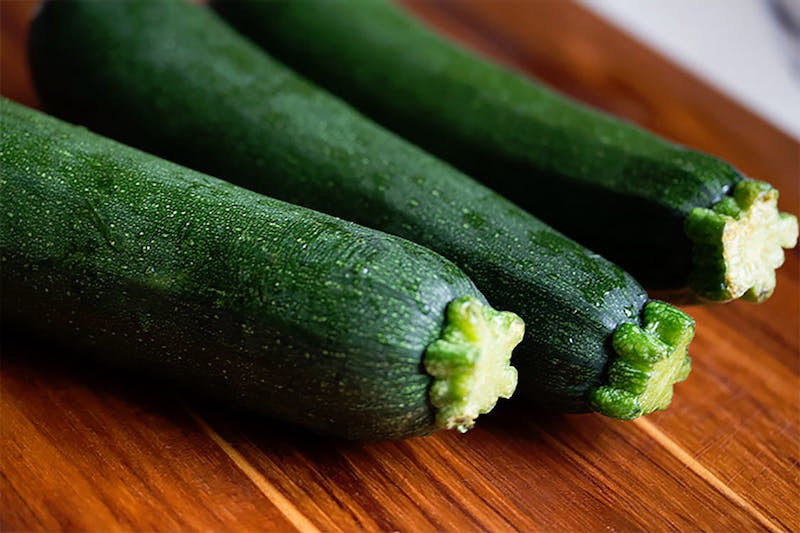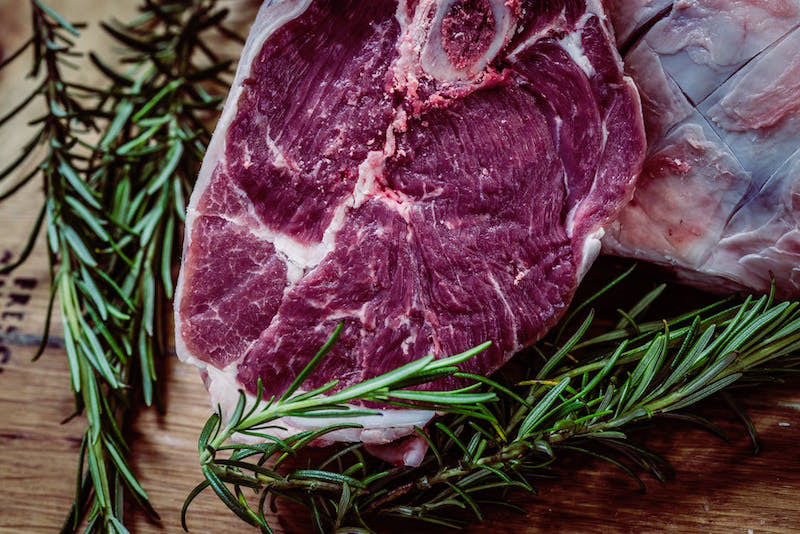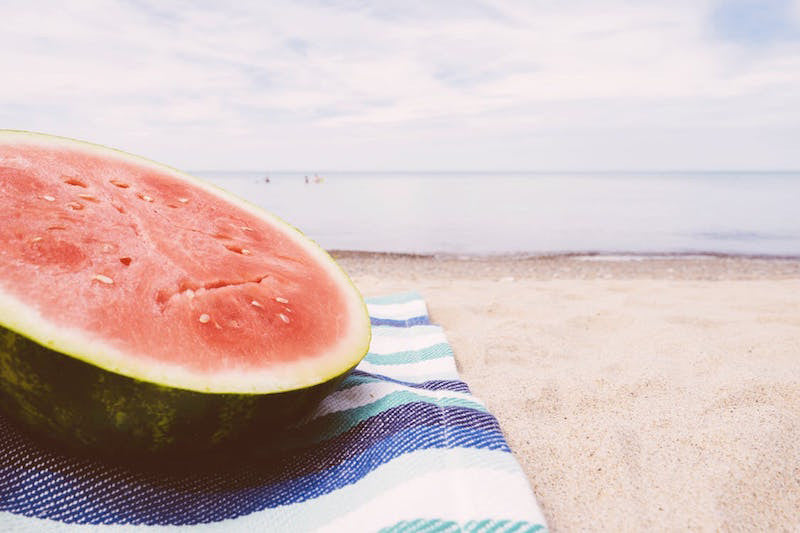Fibro Fix Blog — nutrition

When Life Gives You Lemons, Take Lemon Balm 0
In the 21st century, the hallmarks of American childhood no longer revolve around apple pie, homemade meals, and songs like “Take Me Out to the Ball Game.” Instead, children’s lives are characterized by the consumption of fast food, innovative technology and a plethora of after-school activities. They are more familiar with the family van than the family room. An inescapable reality exists in which America is morphing into a society branded by speed and productivity. However, despite the accomplishments achieved through fast-paced lifestyles, we cannot ignore the inner turmoil that occurs as our bodies strive to maintain optimal health and wellness during periods of chronic stress.
Perhaps, one of the greatest pieces of evidence of this lifestyle change can be witnessed in the physician’s office. Panic attacks, anxiety, depression, insomnia, fatigue and associated conditions are on the rise. Antidepressants, antipsychotics, sleep aids and narcotics are common drugs seen in most American homes. It appears that the 21st century American could benefit from something akin to the fictitious “chill pill.” While many facetiously throw around references to such a pill in the famous cliché, others are aware that such a remedy may actually exist in the form of the ancient herb, lemon balm (Melissa officinalis).
Lemon balm has a history of promoting relaxation and a calm demeanor. Back in the 15th century, the famous Swiss physician Paracelsus dubbed lemon balm the “elixir of life,” because it promoted health and longevity. English herbalist, John Gerard, even believed that lemon balm was a comforting herb, helping to drive away sadness. The citrus flavor of lemon balm’s essential oil made it a popular choice for flavoring drinks, freshening rooms and polishing furniture. Its most ancient use as a bee attractant made it indispensable to beekeepers. When planted near beehives, lemon balm would ensure the busy bees stayed close to home.
Modern science attributes lemon balm’s calming, sedative-like properties to the herb’s ability to support the brain’s neurotransmitters – chemical hormones responsible for influencing our moods and circadian rhythms (the body’s 24 hour biological clock). When we are under chronic stress, certain neurotransmitters are awakened in the brain and act to stimulate us, keeping us alert and active. Sometimes, an abundance of these neurotransmitters can lead to anxiety, panic, and depression, and can interrupt our sleep patterns. When our stress-induced neurotransmitters increase, our bodies attempt to balance the scales by producing more calming neurotransmitters. These chemical hormones are responsible for relaxing our muscles, eliciting overall calmness, and improving our sleep habits. Lemon balm acts to support healthy production of the calming neurotransmitters and therefore, helps to balance the stimulatory neurotransmitters that govern our stressful lifestyles.
Lemon balm may also owe its success to the fact that it supports the body’s ability to manage pain appropriately. Many times chronic pain can be a trigger for anxiety, depression and other mental disturbances, and it can also provide a legitimate reason for insomnia. Chronic, stress-induced pain may start with something as simple as a sports injury or bad posture we assume when we bend over a computer desk for long periods of time. Regardless of how chronic pain originates, lemon balm may help promote a healthy pain response that is not overly aggressive.
Stress not only affects our mood and sleep, and creates tense, painful muscles, but it also triggers various digestive problems. Whether an individual is struggling with stress-induced irritable bowel syndrome or the intake of too much fast food, the digestive system is not alone in feeling the effects of our fast-paced lifestyles. Lemon balm comes to the rescue yet again, helping to support a healthy digestive response when we may not be treating our digestive system so kindly.
Although we may dream of being able to hit the pause button on life, reality pushes us forward, demanding more of our time, attention, and ultimately, our health. However, lemon balm can act as a buffer against everyday stressors, aiding our body in its effort to keep our moods elevated, our sleep restored, our muscles relaxed, and our pain managed. Ultimately, this ancient and effective herb, aids us in our ability to simply take a deep breath and chill.
- David Brady
- Tags: chronic illness functional medicine lemon lemon balm nutrition summer wellness and prevention

Magnesium for Men’s Health 0
When it comes to supporting men’s health, exotic sounding nutrients and food sources tend to get most of the attention, such as coenzyme Q10 for heart health, red yeast rice for lipid management, and saw palmetto for prostate health. While these compounds can certainly be beneficial for health concerns in aging men, they shouldn’t crowd out the seemingly commonplace—but tried-and-true—workhorses of human physiology. One of the ordinary, “everyday” nutrients at risk for being underestimated due to its seeming simplicity is magnesium. But don’t let this mineral’s quiet demeanor fool you. For playing a role in men’s health, magnesium is anything but simple.
Three important health concerns that many men face as they age are heart disease, kidney stone formation, and erectile dysfunction. Fortunately, magnesium has been shown to be beneficial for all three. Supporting cardiovascular function is a primary concern for older men. Data from many studies support that magnesium intake is inversely correlated with calcification of the arteries—meaning, the more magnesium people consume, the lower the amount of blood vessel calcification. Compared to people with the lowest magnesium intake (self-reported), those with the highest had 58% reduced odds of having coronary artery calcification.
This is likely due to the complex interactions between calcium and magnesium when it comes to ensuring proper physiological function. Calcium and magnesium are both critical minerals to have in our diet, and magnesium may help the body regulate calcium balance, possibly by keeping it from being deposited in the soft tissue. (Vitamin K2 is also essential for this.)
High blood pressure—known in the medical world as hypertension—is a common sign of cardiovascular trouble, but it is often described as “the silent killer,” since it’s possible for someone to be hypertensive and not even know it. Low magnesium levels often go hand-in-hand with elevated blood pressure, illustrating the many roles magnesium plays in this issue. While calcium is regarded for its role in muscle contraction (squeezing), magnesium has the opposite effect: it is a well-recognized muscle relaxant. One way it accomplishes this is by providing a healthy counterbalance to calcium. But another way magnesium may beneficially affect blood pressure, specifically, is that it increases the production of nitric oxide. Nitric oxide is a vasodilator—it helps to relax blood vessels, which permits blood to flow through them more smoothly.
Another health concern for men is kidney stones. Stone formation is slightly more prevalent in men than women. There are several different types of stones, and they can form for a variety of reasons, but the most common are calcium-based, and they occur when calcium binds with other compounds and solidifies inside the body. (Specifically, it solidifies in places other than where it’s supposed to be solid, such as in bones and teeth.) Recognizing the importance of magnesium for balancing calcium, it’s not surprising that kidney stones often occur in the same people who have heart disease, and vice-versa. The complex interplay between calcium and magnesium suggests that the calcification of blood vessels, and the precipitation of calcium into solid stones, may both result from insufficient magnesium.
Aside from heart health and kidney stones, probably the most powerful, “real-world” concern for adult men of all ages, is sexual function. This issue moves to the forefront as men age, and some experience a decline in the ability to get and sustain an erection. One of the main causes of this may be reduced blood flow to the affected area. With this in mind, erectile function is another area where magnesium’s role in facilitating blood vessel relaxation may have a beneficial effect. Another factor that contributes to erectile dysfunction in aging men might be declining levels of male sex hormones (androgens). Interestingly, an additional feather in magnesium’s cap for supporting men’s sexual health is that it has been shown to positively affect anabolic hormonal status, including testosterone, in older men.
Considering leafy greens are good sources of magnesium, Popeye was right: men should eat their spinach!
Sources
- Maggio M, et al. The Interplay between Magnesium and Testosterone in Modulating Physical Function in Men. Int J Endocrinol. 2014;2014:525249.
- Hruby A, et al. Magnesium intake is inversely associated with coronary artery calcification: the Framingham Heart Study. JACC Cardiovasc Imaging. 2014 Jan;7(1):59-69.
- Alexander RT, et al. Kidney stones and cardiovascular events: a cohort study. Clin J Am Soc Nephrol. 2014 Mar;9(3):506-12.
- Houston M. The role of magnesium in hypertension and cardiovascular disease. J Clin Hypertens (Greenwich). 2011 Nov;13(11):843-7.
- David Brady
- Tags: functional medicine health Magnesium men's health nutrition summer supplement wellness and prevention

YOU SAY TOMATO, WE SAY…TREMENDOUS 0
It wouldn’t be summer without plump, juicy heirloom tomatoes piled high on a table at the farmers’ market, or containers of cherry tomatoes as sweet as raspberries reappearing in supermarkets for the season. Eating a rainbow of produce is an effective—and tasty—way to ensure intake of a wide array of nutrients and phytochemicals, and just within the tomato family itself, you can find red, green, yellow, orange and purple varieties.
Tomatoes can be found in stores year-round, but the drab, mushy, and mealy ones you come across in winter might as well be a completely different fruit from the plump, fresh, sweet ones available in the height of summer. In fact, tomatoes’ botanical name—Solanum lycopersicum—is reminiscent of sunlight, itself, while also providing the root of the word lycopene, which is a powerful antioxidant found in red and pink fruits and vegetables.
With their low carbohydrate content, fiber, and complement of nutrients, tomatoes fit nicely into many different nutritional strategies, including vegetarian, low-carb, and Paleo-style diets. Due to tomatoes’ natural sweetness, people on very low carbohydrate diets sometimes avoid them, but this isn’t necessary. Tomatoes—particularly when they’re in season—are sweet, and although they have a slightly higher glycemic index than, say, spinach and broccoli, their glycemic load is extremely low. This means it would take a very large amount of tomatoes to have an adverse impact on blood sugar; although, of course, individual sensitivity to carbohydrate varies. In the spectrum of carbohydrate-containing foods, tomatoes aren’t exactly cupcakes!
As for their nutrient content, tomatoes are a good source of vitamin C, vitamin K1, beta-carotene, and potassium. They are perhaps best known for the aforementioned antioxidant phytochemical, lycopene. Lycopene may help protect the skin from sunburn, and studies have shown it also has the potential to help support healthy cholesterol levels in the blood. Interestingly, lycopene concentration is higher in tomato products—such as tomato paste and tomato sauce—than in fresh tomatoes. Since lycopene and beta-carotene are both fat-soluble carotenoids, the body absorbs them best when they’re eaten along with some fat—in case you needed an excuse to drizzle some good olive oil over a fresh tomato salad, or sprinkle a little cheese on a bowl of zucchini noodles with tomato sauce.
As if their flavor and nutrient content weren’t good enough reasons to eat tomatoes, there’s another beneficial substance hiding in tomatoes, tucked away like a little secret: melatonin! It’s true: tomatoes contain a small amount of melatonin, and plant researchers believe it has a similar function in plants as it does in humans: it helps regulate a plant’s circadian rhythm. A study in which multiple tomato cultivars were grown in the same greenhouse, but some were grown in full sunlight while others were shaded, found that the shaded tomatoes had as much as 135% more melatonin than the non-shaded ones. This suggests that light exposure plays a role in their melatonin content, just as melatonin synthesis is regulated by photo-exposure in people. (Melatonin is synthesized as light exposure decreases, such as when the sun is setting, preparing people—and plants—for bedtime.) The amount of melatonin in tomatoes isn’t enough to act as a sleep aid, but it’s an interesting bit of trivia, nonetheless. (Imagine getting sleepy after a glass of tomato juice at breakfast!)
Don’t limit yourself to the more common red tomatoes. Other varieties bring additional nutritional properties, such as purple tomatoes, which have a higher anthocyanin and antioxidant content. Plant breeders recognize these compounds as helping increase the shelf-life and providing protection against certain plant pests, but they’re helpful for human health, as well.
With summer upon us, enjoy the bounty of tomatoes the season offers. But remember: ketchup is not a vegetable!
Sources
- Stahl W, Heinrich U, Aust O, Tronnier H, Sies H. Lycopene-rich products and dietary photoprotection. Photochem Photobiol Sci. 2006 Feb;5(2):238-42.
- Fuhrman B1, Elis A, Aviram M. Hypocholesterolemic effect of lycopene and beta-carotene is related to suppression of cholesterol synthesis and augmentation of LDL receptor activity in macrophages. Biochem Biophys Res Commun. 1997 Apr 28;233(3):658-62.
- Riga P, Medina S, García-Flores LA, Gil-Izquierdo Á. Melatonin content of pepper and tomato fruits: effects of cultivar and solar radiation. Food Chem. 2014 Aug 1;156:347-52.
- Klee HJ. Purple tomatoes: longer lasting, less disease, and better for you. Curr Biol. 2013 Jun 17;23(12):R520-1.

ZUCCHINI – YOUR NEW BEST FRIEND? 0
If you live in a farming community or have friends and neighbors who garden, you’ve probably been the lucky recipient of their surplus zucchini. The summer sun seems to make zucchini multiply inexplicably and prolifically, such that growers will look to foist their harvest on anyone and everyone they can.
But rather than bemoan the endless supply of this underrated vegetable, consider it a boon for a healthy diet. If you’re watching your carbohydrate intake, but find yourself missing your favorite pasta and noodle dishes, zucchini is your new best friend. If you can get your hands on a spiral slicing gadget—or can spare the time to cut long, thin strips by hand—the abundant supply of zucchini summer brings can be transformed into “zoodles,” which you can use to recreate spaghetti and meatballs, pad thai, and other dishes you might be craving, with the benefit of keeping things low-carb, gluten-free, or Paleo-compliant.
Zucchini belongs to the botanical family Cucurbitaceae, which includes many familiar summer and winter squashes and gourds, such as yellow, crookneck, delicata and acorn squash, pumpkins, watermelon, cucumbers and ornamental gourds.
Zucchini is a great addition to both omnivorous and vegetarian diets. It’s a good source of vitamins C and B6, riboflavin, vitamin A precursors, potassium, and manganese. It’s high in the carotenoid lutein, which is beneficial for eye health. Since lutein is a fat-soluble compound, and the body absorbs it better with a little bit of fat, it’s not a bad idea to add a pat of rich, yellow summer butter to steamed zucchini, or toss a pile of zucchini noodles with olive oil and garlic. Great side dishes for an outdoor dinner in the warm weather!
Zucchini is very low in carbohydrate, with a glycemic index that is practically negligible. It’s a good choice for filling a plate without racking up high calorie levels, although excess consumption can potentially lead to unpleasant gastrointestinal side effects. Part of this is due to the fiber content of this non-starchy vegetable, but another reason is that during storage and shipping, the carbohydrate content of zucchini changes a bit. One of the compounds that increases upon storage is raffinose. Raffinose belongs to the FODMAP category—fermentable, oligo-, di- and mono-saccharides and polyols. It’s an oligosaccharide that the human body lacks the enzyme to break down, so consumption of high amounts can result in gas and bloating.
With the growing popularity of “nose-to-tail” cooking for making use of all parts of animal foods, we shouldn’t forget that the same philosophy can be applied to vegetables. The yellow zucchini flowers that accompany each squash make a wonderful appetizer or side dish. A classic way to prepare these flowers is to stuff them with ricotta or goat cheese and fry them. Making zucchini bread or muffins is a good way to sneak these vegetables into unsuspecting children, and for those watching their starch intake, zucchini can be stuffed with an endless variety of toppings, including tomato sauce, olives, and fresh cheese, lending a pizza flavor, minus the dense bread base. Another way to make use of the avalanche of zucchini in summer is by preserving it, such as in relish, or simply blanching it and freezing it for winter. Dehydrating is another option, with crispy zucchini chips making a great, healthy snack for kids and adults alike.
Sources
- Sommerburg O, Keunen J, Bird A, van Kuijk FJGM. Fruits and vegetables that are sources for lutein and zeaxanthin: the macular pigment in human eyes. The British Journal of Ophthalmology. 1998;82(8):907-910.
- Mildred E. Mathias Botanical Garden. UCLA. Economic Botany. Cucurbitaceae.

A TRANS FAT THAT’S GOOD FOR YOU? 0
If you follow health and nutrition news, no doubt you’ve heard of trans fats, and no doubt you know you generally want to stay away from them. Trans fats are created when oils that are normally liquid at room temperature (like soybean or canola oils) undergo complex chemical processing that results in them being solid or semi-solid, such as in margarines and vegetable shortening. You can recognize trans fats in ingredient lists by the words “partially hydrogenated.” Any oil that has been partially hydrogenated contains trans fats. And even if a food label claims it has “zero grams trans fat per serving,” it’s still important to read the ingredients list, because under the current U.S. labeling laws, manufacturers are permitted to claim a product has “zero” grams of something if it contains less than 0.5 grams per serving. So there are many processed foods that do contain trans fats, but the labels are deceptive, because the serving sizes are typically very small. (Meaning that when you eat a more reasonable portion, you could be ingesting several grams of trans fat without even knowing it.)
Trans fats are found in many common processed foods, including crackers, cookies, supermarket bakery cakes and quick breads, cake frosting, and peanut butter. They’re used in these products because the partially hydrogenated oils have a longer shelf life than the liquid oils they start out as, and also because they were intended to replace saturated fats, which are naturally solid at room temperature, but which for decades were believed to be linked to heart disease and obesity.
You can train your palate to recognize these fats because they have a different “mouthfeel” from the natural saturated fats. Margarine doesn’t melt in your mouth the same way real butter does; peanut butter that contains partially hydrogenated oils coats the roof of your mouth with a kind of “waxy” texture that is absent from peanut butter with no added oils.
And just as they don’t feel and taste the same as natural saturated fats, they don’t act the same way in your body. Decades of research have shown that consuming trans fats can have a detrimental effect on cardiovascular health by negatively influencing levels of LDL and HDL. Because of the way they interfere with normal cell signaling, they are also associated with poorer body composition and difficulty losing body fat.
With much recent research exonerating the saturated fats you were likely cautioned to limit for many years, you may see a move away from trans fats and a return to the use of more traditional fats, like butter and coconut oil, in processed foods. And this is a great thing, but let’s not throw the baby out with the bathwater. Not alltrans fats are to be avoided. In fact, there’s a natural trans fat that is associated with many positive health outcomes.
This good trans fat is called conjugated linoleic acid (CLA), and it’s found mostly in the fat and dairy products of ruminant animals (cows, goats, sheep, bison). CLA content is highest when these animals consume their natural diets—grass, silage, and hay—rather than the grains they’re fed in industrial feedlots. Feedlot animals still produce a little bit of CLA, but there’s much more in the fat from grass-fed animals.
CLA may help support body fat loss and maintenance of a healthy body composition. Some studies looking at CLA supplementation have shown it to be beneficial even without changes in diet and lifestyle, but in the absence of those modifications, CLA might help to an extent, but it won’t be a “magic bullet” for weight loss. It’s also been shown to promote a healthy inflammatory response and support normal cell signaling. Because of its role in contributing to proper cell function, it may also aid inhealthy insulin signaling.
With the near-disappearance of CLA from our modern food supply, and the potential positive impact CLA has on whole-body health, consider seeking out meat and dairy products from grass-fed and pastured animals. You can often find these from local producers at nearby farmers’ markets. If you don’t have access to these, consider supplementing with a high-quality CLA product.
- David Brady
- Tags: CLA dairy grass-fed health meat nutrition trans fat weight loss wellness and prevention

WATERMELON – A SUMMERTIME STAPLE 0
Summertime picnics and holiday celebrations would hardly be complete without watermelon. But this brightly colored perennial favorite fruit offers up more than a juicy, thirst-quenching snack in hot weather. Its potential health benefits give it a welcome place at the table.
It is well known that women’s risk for cardiovascular events increases after menopause. Compounds in watermelon may help to improve blood vessel elasticity in this susceptible population, possibly resulting in favorable effects on blood pressure. The effects of watermelon on cardiovascular health are likely due to the fruit’s relatively high content of citrulline, an amino acid that serves as a metabolic precursor to arginine. (In fact, citrulline was first isolated from watermelon, and the compound takes its name from the plant’s botanical name, Citrullus lanatus.) Arginine is a key factor in the production of nitric oxide, which is a vasodilator—meaning, it helps relax the blood vessels, which may allow blood to flow more smoothly. Studies in post-menopausal women and obese adults with hypertension and pre-hypertension have shown that compounds extracted from watermelon help to moderately lower blood pressure. Because of the way the body metabolizes arginine, consuming foods rich in citrulline may be an even more effective way to raise arginine levels in the body than by consuming arginine directly.
The benefits of watermelon compounds on the cardiovascular system make watermelon a nice addition to post-workout recovery for athletes. Fresh as well as pasteurized watermelon juice were shown to have helpful effects on muscle soreness in healthy young men 24 hours after a maximum effort test on a bicycle ergometer.
Watermelon is good source of the antioxidant lycopene, also found in other red/pink fruits and vegetables, such as tomatoes and guava. In a study of healthy adults, supplementation with watermelon juice resulted in significant increases to plasma lycopene, compared to no supplementation. It’s a nice coincidence that watermelon—a summertime staple—is so rich in lycopene since lycopene may be protective against UV-induced photo-damage to the skin. In other words, to a certain degree, watermelon might be nature’s sunscreen!
A cup of watermelon (152g) provides 21% of the daily value (DV) for vitamin C, and 17% of the DV for vitamin A (as beta-carotene). The natural sweetness of watermelon might make those concerned about their sugar intake refrain from this delicious summer treat. However, a one-cup serving of watermelon has just 11g of carbohydrate. Compare that to a large bagel, weighing 131g (less than the watermelon), which delivers a whopping 70g of carbohydrate. Moreover, while the glycemic index of watermelon is relatively high, the glycemic load is quite low. After all, it’s not called watermelon for nothing: of the 152g by weight, 139g are water!
The peppery bite of bitter greens, such as arugula, and the saltiness of cubed feta cheese, make a classic salad to complement the sweetness of watermelon. And the bright pink flesh of a watermelon isn’t the only edible part. Nose-to-tail cooking doesn’t apply just to animal foods; you can use all parts of a watermelon in culinary applications. You can certainly compost the rind and seeds, but there are other ways to put these underappreciated parts to use. Pickled watermelon rind is a great way to use something that is typically discarded. In fact, the rind contains even more citrulline than the pink flesh, and more of other helpful phytochemicals as well.
And don’t forget about the seeds! Watermelon seeds are good for more than spitting out onto the grass at family picnics. Although we don’t typically think of eating them, they’re a good source of natural fats, and they’re high in magnesium, phosphorus, zinc, and manganese.
Consider these recipes for new ways to enjoy watermelon:
- Arugula, Watermelon and Feta Salad
- Watermelon and Tomato Gazpacho
- Watermelon Coconut Cooler
- Watermelon Salad with Tomatoes, Goat Cheese and Basil
And a couple for the rind (feel free to use less sugar, or better yet, use xylitol instead):
Sources
- Figueroa A, Wong A, Hooshmand S, Sanchez-Gonzalez MA. Effects of watermelon supplementation on arterial stiffness and wave reflection amplitude in postmenopausal women. Menopause. 2013 May;20(5):573-7.
- Edwards AJ et al. Consumption of watermelon juice increases plasma concentrations of lycopene and beta-carotene in humans. J Nutr. 2003 Apr;133(4):1043-50.
- Tarazona-Díaz MP, Alacid F, Carrasco M, Martínez I, Aguayo E. Watermelon juice: potential functional drink for sore muscle relief in athletes. J Agric Food Chem. 2013 Aug 7;61(31):7522-8.
- Tarazona-Díaz MP, Viegas J, Moldao-Martins M, Aguayo E. Bioactive compounds from flesh and by-product of fresh-cut watermelon cultivars. J Sci Food Agric. 2011 Mar 30;91(5):805-12.
- Boris Revsin
- Tags: Arginine athletes cardiovascular health lycopene nutrition summer watermelon Watermelon seeds wellness and prevention workout
